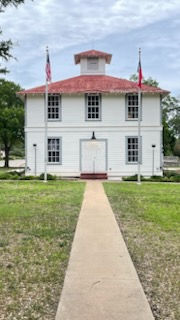Fort Martin Scott Historic Site
- katellashisadventure
- Feb 3
- 2 min read

Fort Martin Scott is located on Hwy 290 as you drive into Fredericksburg. For a long time, I didn’t pay attention to this unique little site because I simply did not notice it as it looks like it is part of the Texas Rangers Heritage Center. I recommend stopping by and visiting this unique site and chatting up the museum greeters. They are a wealth of information.
First established in 1848, it was one of the first frontier forts and currently houses the oldest frontier fort building in Texas. The fort operated from 1848 until 1853 as a U.S. Army outpost and was later used by the Confederate Army during the Civil War. It was established to protect settlements from Indian attacks, specifically the Comanche. It wasn’t officially abandoned by the Army until 1866 and was scavenged by local residents for materials.
The Breautigam family purchased the abandoned fort in 1870 for $1,650.00. In addition to using the property as a farm, they built a saloon on the property as well as the first dance hall in Gillespie County and held the first county fair in this location. They used every building that was on the site at the time for their farming and business activities.
Unfortunately, in 1884 Mr. Braeutigam was murdered by robbers and the family closed the saloon. His heirs would sell their interest in the land to their youngest brother Henry. The family of Henry Braeutigam sold the property to the City of Fredericksburg in 1959[1].
The building pictured here is one of the oldest fort buildings this side of the Mississippi and was used as a barracks for the soldiers who were stationed here. The majority of the buildings on the site is replicas. The Texas Historical Commission took over the running of the site in June of 2024 and will be expanding some of the programs offered there.
When you're done visiting the Fort head into Fredericksburg to enjoy lunch or dinner and learn more history!
[1] The website for the City of Fredericksburg states it was purchased by the city in 1949 but the marker at the site states 1959.









Comments